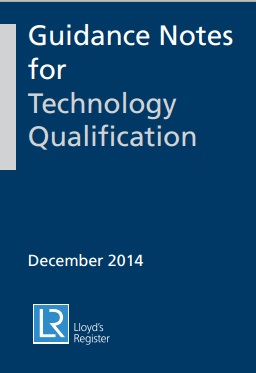Recently launched is a new risk-based Technology Qualification Guidance Note that helps to minimize risks and uncertainty of novel designs, concepts, or applications not covered by existing rules, industry codes or best practices.

Stakeholders working across the energy supply chain can now rely on a common, global approach to ensure that the technology and innovations which are planned for use in upcoming energy sectors actually work as intended.
As easy to reach hydrocarbon resources are exhausted, companies are increasingly looking to challenging frontiers to retain reserve levels or boost new sources of energy. This is one key driver is pushing innovation to the forefront of global technology development, a trend seen in Lloyd’s Register Energy’s recent global Technology Radar survey. It highlights that spend on new and novel technologies is an expanding market and looks set to continue to 2020 and beyond.
However the increasing complexity around the development of this technology can be risky. Lloyd’s Register Energy’s latest Guidance Note provides a step-by-step approach for industry on how to develop and operate new technologies in a safe, reliable and environmentally friendly way.
“Our new Technology Guidance Note represents a recommended practice with a goal-based approach to risk that can be applied to any technology, from unconventional LNG offloading arrangements through to subsea processing, and even new wind and wave technology,” said John Yates, Lloyd’s Register’s Technical Manager for Compliance Operations.
Technology Qualification is a method for providing evidence that equipment will function within specified operational limits and with an acceptable level of confidence, for suppliers and buyers of technical equipment. For the investor or insurance provider, it is a good way to assess the readiness levels of new innovations against the total monetary investment that needs to be made.
“Our Technology Qualification Guidance Note has a major role to play in relatively young and unproven components, processes or systems with a lack of historical data,” said Yates. “The technologies that are to be commercialized within the oil and gas and also the renewables sector can be both emerging technologies and technology that is unproven on a large industrial scale. Our approach supports a better way for technology developers to manage costs and the associated risks of bringing new technology to market.”
Lloyd’s Register Energy offers a robust and systematic risk assessment process that demonstrates to interested parties that the uncertainties introduced by a novel technology, or a new application of an existing technology, have been adequately assessed with goal-based risk analysis. It covers issues such as safety, environmental impact, functionality, performance and technology reliability.
Stakeholders working across the energy supply chain can now rely on a common, global approach to ensure that the technology and innovations which are planned for use in upcoming energy sectors actually work as intended.
For a copy of the TQ Guidance Note visit:
Lloyd’s Register Energy
www.lr.org/guidance-notes
Filed Under: Insurance, News, Policy





While this is interesting, it does not address one of the major commercialization risks for new technology, which is intellectual property rights (IPR). There was a point in time at which independent technical certification of a wind turbine architecture was not mandated. Nowadays, third-party technical certification is a necessity to secure project finance and a sensible precaution by a turbine manufacturer to avoid downstream wind project liabilities.
Property and casualty insurance against such downstream problems has emerged to close any gaps which may have been missed during the project due-diligence and the independent technical certification. These insurance policies are predicated on an operational track record of turbines and benchmarking against other manufacturers (as well as other industries) in regards to quantifiable failure rates, scope of liability claims, and contractual obligations of industrial equipment manufacturers, equipment purchasers and those who finance such projects.
Presently, independent IPR infringement risk certification is not mandated in the wind industry, or virtually any other industry where project finance is utilized. Most turbine OEMs provide their own data and validation to turbine purchasers and project financiers, but only if asked, and typically only in matters related to patent infringement litigation recognized in the public domain.
This validation from the turbine manufacturer is not an independent assessment. What most turbine OEMs do not realize or have not publicized, is that they are all infringing on one another! This information is typically ignored unless addressed to a turbine manufacturer or known by an OEM. If it is known, the potential infringement is typically kept quiet unless strategic considerations are at play.
Additionally, turbine manufacturers are introducing another level of risk for project financiers and turbine purchasers by not providing full indemnity in turbine supply contracts specifically to limit their own liability. Most turbine OEMs do, however, mandate full indemnity from their sub-component suppliers or those sub-component suppliers are barred from participation in a competitive bid or sole source award for key components in the wind turbine.
There is an opportunity here to plug these holes with an insurance product, but that is a stop-gap measure if the insurer can’t quantify IPR infringement risk. They also require an assessment of IPR infringement risk and this type of analysis is typically not a core competency. In this manner an independent assessment can provide the needed clarity.